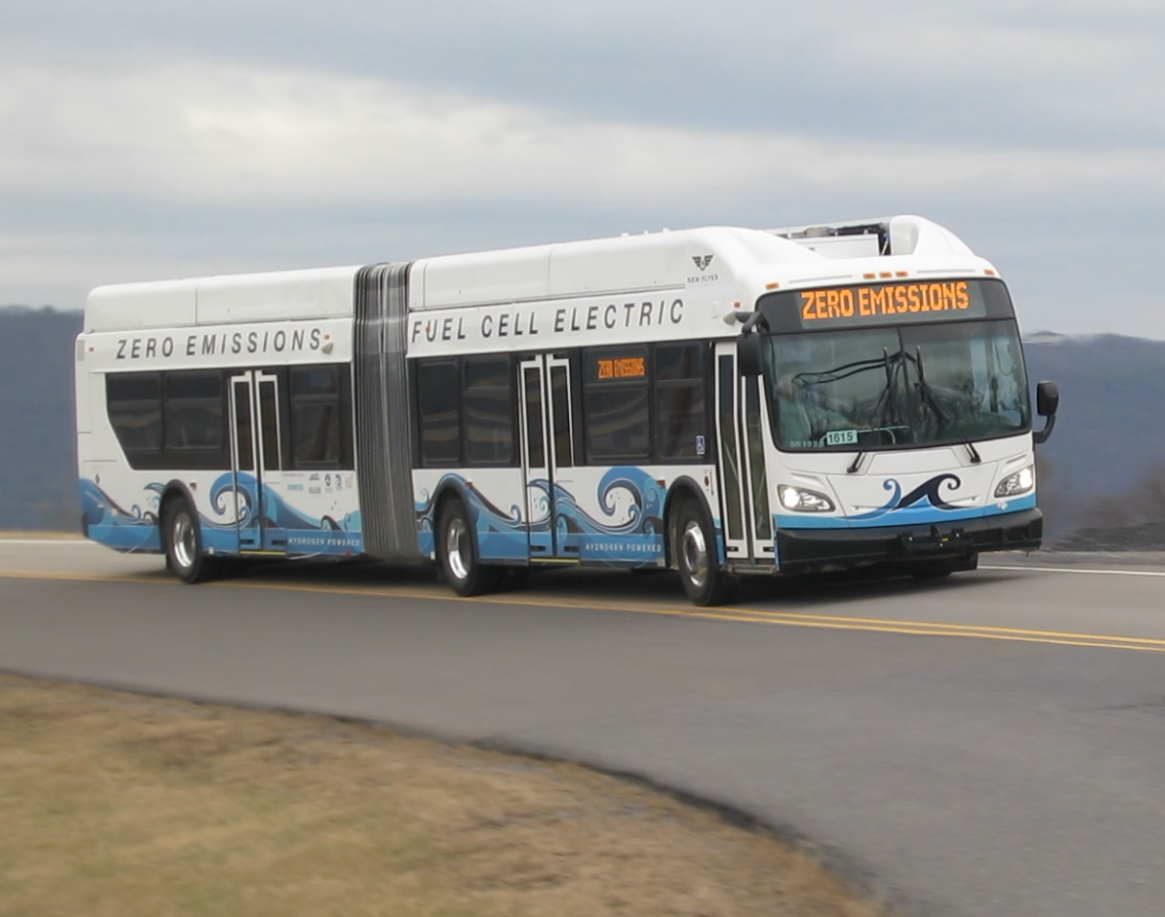From the press release:
FTA GRANT AWARDED TO MTD
TO ADD HYDROGEN FUEL CELL ELECTRIC BUSES
Urbana, IL—A $1.45 million competitive Federal Transit Administration (FTA) grant has been awarded to the Champaign-Urbana Mass Transit District (MTD) for the purchase of no-emission, hydrogen fuel cell electric buses and associated infrastructure. The Low-No Emissions Grant is offered by the FTA to support the transition of the nation’s transit fleet to the lowest polluting and most energy efficient transit vehicles. Such a purchase will make MTD the first transit authority in the State of Illinois to add fuel cell electric buses to their fleet.
“The Champaign-Urbana Mass Transit District continues to be a leader in the region by providing innovative transportation services to the community, and this grant is no exception,” said U.S. Rep. Rodney Davis (R-IL13). “I’m proud to see the transit district receive these funds, which will add two new, energy-efficient buses to its fleet.”
In anticipation of this advancement of MTD’s environmentally friendly efforts, Karl Gnadt, MTD’s Managing Director, attended the Midwest Center of Excellence’s 2017 Public Transit Workshop this week in Canton, Ohio to examine the technolog firsthand and to learn about such things as fueling and infrastructure requirements.
“MTD has long been on the front edge of technological advances,” says Gnadt. “With
this Low-No Emissions Grant, MTD will be the first transit system in the country to
commercially operate 60-foot, articulated, hydrogen fuel cell electric buses. This is
fantastic news for the University of Illinois campus and the greater Champaign-Urbana area. We are grateful that Representative Davis and Senators Durbin and Duckworth worked together to show support for this local initiative that advances positive, sustainable programs here at home. This grant would not have been possible without their support.”
How does fuel cell technology work?
Most vehicles use an internal-combustion engine to burn fuel, generate heat, and push pistons up and down to drive the transmission and wheels. Whereas, instead of an engine, electric vehicles rely on batteries that feed electric power to electric motors that drive the wheels directly. Hybrid vehicles have both internal-combustion engines and electric motors and switch between the two as necessary.
Fuel cells are a bit like a cross between an internal-combustion engine and battery
power. Like an internal-combustion engine, they make power by using fuel from a tank, but the fuel is hydrogen gas rather than gasoline or diesel. Unlike an engine, a fuel cell doesn’t burn the hydrogen. Instead, the hydrogen is fused chemically with oxygen from the air to make water. In the process, which resembles what happens in a battery, electricity is released and used to power a vehicle’s electric motor. The only waste product is water—which exits the vehicle as steam and a liquid pure enough to drink.
Think of fuel cells as batteries that never run flat. Instead of slowly depleting the
chemicals inside them, as normal batteries do, fuel cells run on a steady supply of
hydrogen and continue to generate electricity as long as there’s fuel in the tank.
In Brief:
- Hydrogen fuel cell buses look and act like hybrid buses but offer zero-emissions.
- MTD’s fleet is currently 77% Hybrid and will be 83% Hybrid by 2018, making MTD a leader in providing environmentally friendly public transportation. This FTA Low-No Grant will take MTD’s fleet to the next level.
- MTD will be the first in Illinois to add hydrogen fuel cell electric buses to their fleet and the first in the United States to commercially deploy 60-foot, articulated, hydrogen fuel cell electric buses.
- Hydrogen is a clean and safe energy carrier that will meet a full day’s transit needs without the need to stop and refuel or recharge.
- Hydrogen can be produced from natural gas, biogas, and electricity, including electricity generated from renewable sources such as solar. MTD’s solar farm produced 257,000 kilowatt hours of renewable energy in FY2017, and MTD plans to pursue the self-production of hydrogen from solar and other renewable sources.
MTD’s Hydrogen Fuel Cell Electric Buses, By The Numbers:
- 0 Zero-emissions at the tailpipe
- 250-300 Mile range between refueling
- 2017 Year of FTA Grant announcement
- 2019 Year of expected delivery of hydrogen fuel cell electric buses








